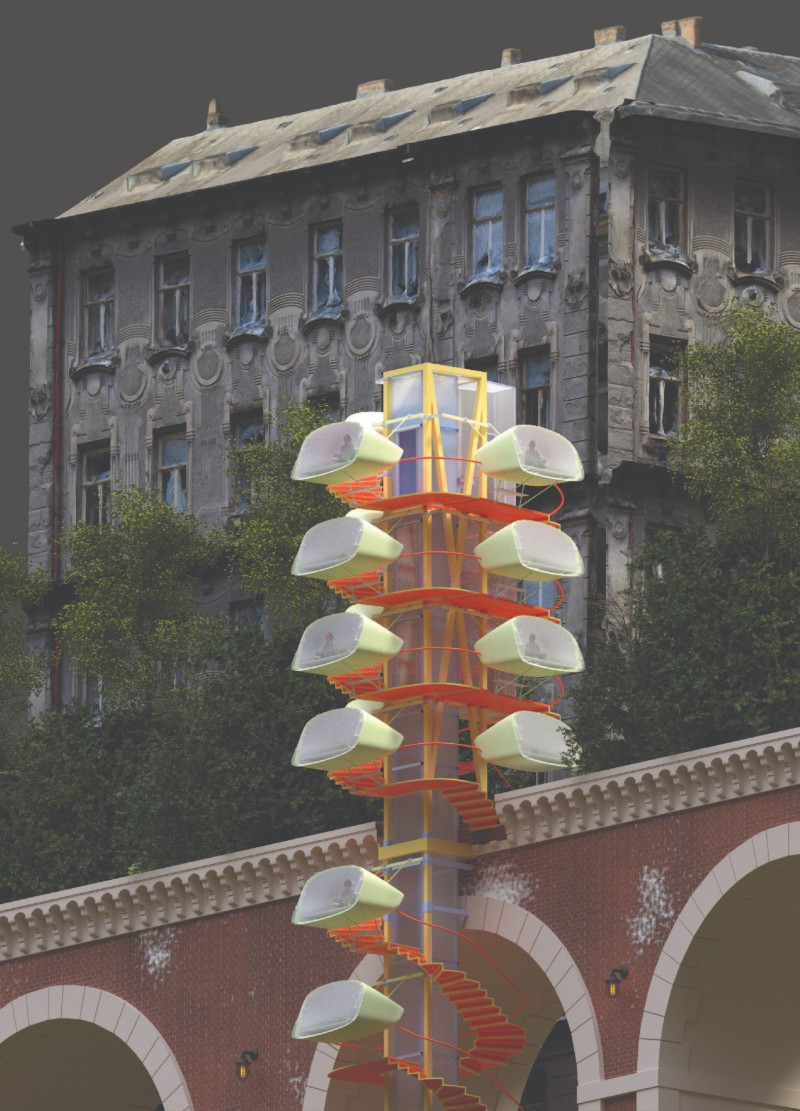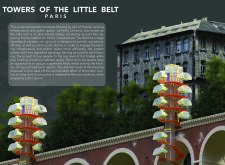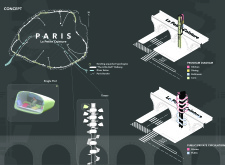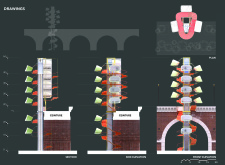5 key facts about this project
Vertical Living Integration
This project innovatively utilizes vertical structures, with slender towers that host multiple living pods arranged spirally. The configuration aims to optimize urban space, enhancing density without compromising individual privacy. Each pod serves as a micro-living unit, equipped with essential amenities, while shared facilities promote social interaction among residents. The design encourages community building through collaborative use of kitchens and bathrooms, thus addressing both individual and communal living needs.
Material Utilization and Sustainability
The material palette emphasizes durability and aesthetics. A steel frame supports the weight of the towers while allowing flexibility in design and function. Extensive glass façades provide natural light to the pods, promoting a connection between indoor living and the external environment. Select wooden elements are incorporated into the staircases and pod interiors, introducing warmth and inviting textures that contrast with the modern steel and glass. This thoughtful combination of materials underlines the project’s sustainability approach by minimizing the need for extensive new construction through the reuse of existing structures.
Community-Centric Design Approach
The "Towers of the Little Belt" stands out due to its focus on community-oriented living. The design encourages interaction among residents, fostering a sense of belonging within the urban fabric. The architectural strategy is not only about providing housing but also about creating a vibrant community space that can enhance the quality of urban life. By integrating architecture with social needs, the project addresses contemporary urban challenges while offering an efficient living solution.
For a more detailed exploration of the project’s architectural plans, sections, designs, and ideas, readers are encouraged to review the complete project presentation. The insights provided will enhance understanding of how the design responds to specific urban contexts and societal needs.


























